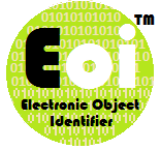حدیثِ لولاک کا تحقیقی و تجزیاتی مطالعہ
A Research Review of the Hadith e Lawlāk
Keywords:
Ḥadith e Lawlāk, Objections, Authenticity, Narrators, Chain of Narration.Abstract
The importance and authenticity of the hadiths of the Prophet (PBUH) in the Muhammadan Ummah is an undisputed fact. A large number of Muḥaddithīn and imams spent their lives in collecting and editing the hadiths of the Prophet (PBUH) and compiled a collection of hadiths. These hadiths were classified according to their health and weakness. Due to the efforts of the imams, there are hadiths narrated from the Messenger of Allah on all sciences and knowledge and issues and rulings. Among them are Hadith Qudsī, Ma‘rūf, Mawkūf, Maktū‘, Saḥiḥ, Ḥasan Za‘īf and all other types of Hadith. The same Hadith e Qudsīyyah also includes a Hadith Lawlāk "لولاک" refers to those hadiths in which the Prophet ﷺ has been described as the cause of the creation of the universe and the origin of the universe. That is the hadith in which Allah Almighty has related the Prophet (PBUH) as the reason for creating the universe and its beings. However, the words of "Hadith e Lawlāk" The authenticity of the hadith has been made a subject of discussion. Some imams have declared this hadith to be weak and some have also said that it is valid. However, a large number of scholars have agreed on the authenticity of this hadith and the hadith has been declared correct in terms of meaning and has been recorded in the books of hadith, biographies and interpretations and other subject books. In the article under review, the sayings of Imams on the health and weakness of Hadith Lawlāk have been presented and research analysis of the said Hadith has been done through simulation and rational arguments.
Views & Downloads Stats:
Downloads
Published
How to Cite
Issue
Section
License
Copyright (c) 2022 Hafiza Sania Mushtaq

This work is licensed under a Creative Commons Attribution-ShareAlike 4.0 International License.








